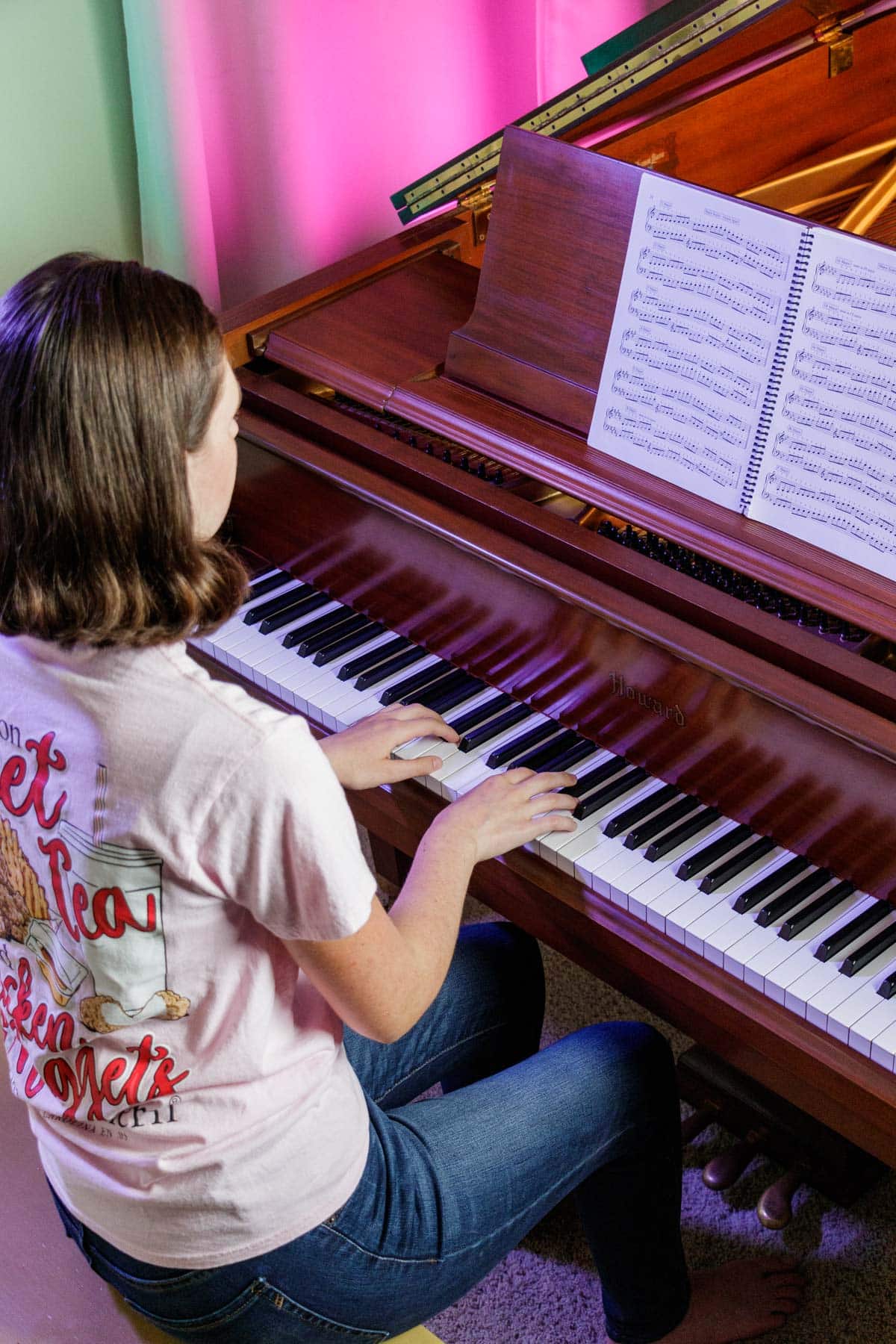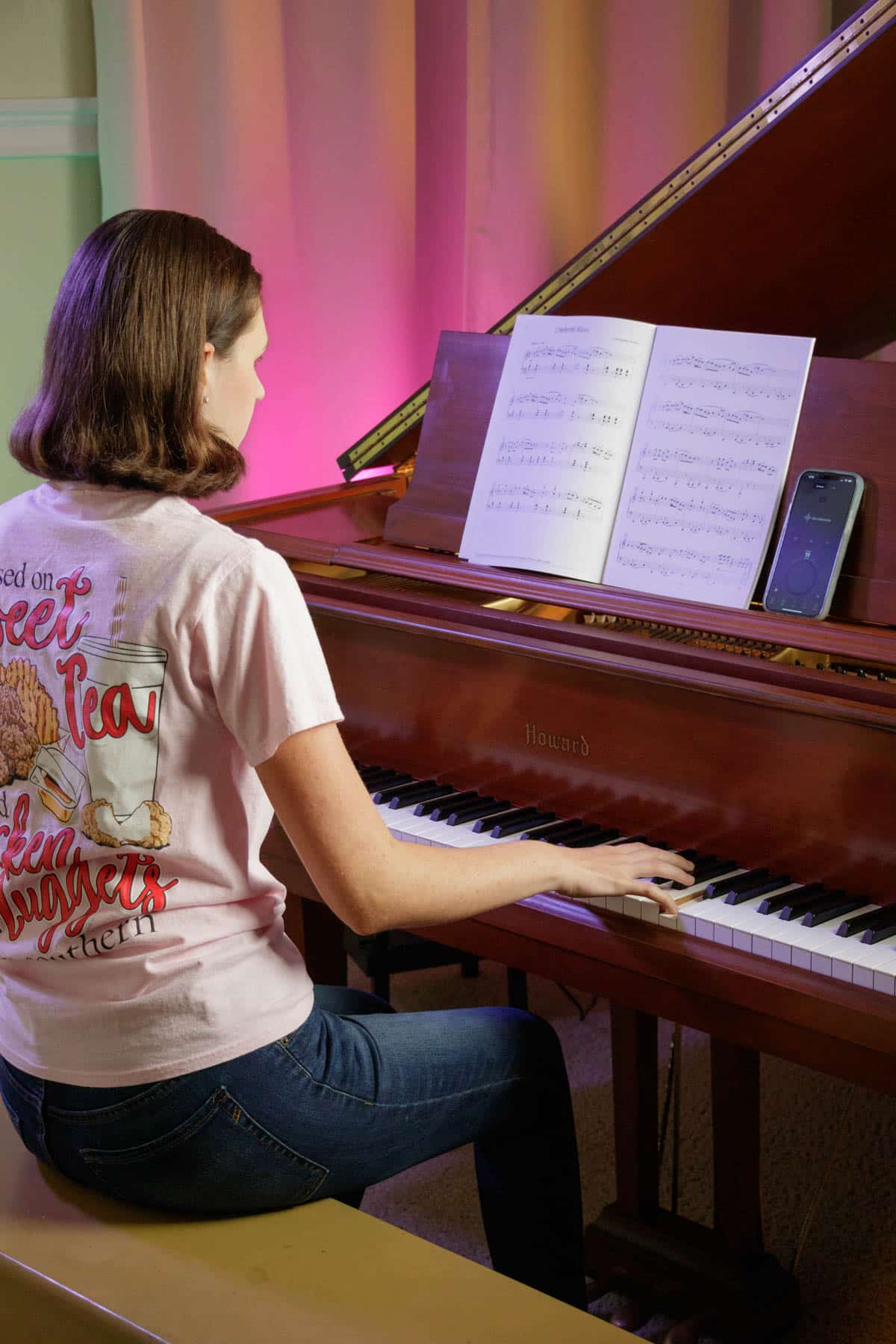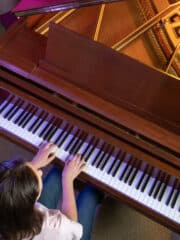As a beginner piano player, are you tired of making slow progress? Are you frustrated with choppy playing, hand independence issues, or fingers with a mind of their own? Then chances are, you might not have been practicing these beginner techniques!
New to piano? Check out these 13 tips for beginner pianists and how to practice effectively.

About
In this article, I’ll teach you how to practice these 5 areas of beginner technique so you can play accurately, smoothly, and beautifully. If you practice these skills faithfully, you’ll be able to impress your family and friends with your amazing playing!
What are the techniques we'll be talking about? First, we’ll be talking about correct hand and body position, then we’ll take a look at how to practice scales and octaves.
I’ll show you how to play with a metronome to improve your timing and rhythm. Make sure to watch until the end to get some pro tips for using the damper pedal to make your songs concert ready. Let’s jump in to these great beginner techniques!
Technique #1

The first technique most beginners skip is playing with the correct hand and body position.
If you’ve been feeling tense or uncomfortable when playing, you might need to adjust your posture. Sitting correctly will make playing much easier, and prevents strain in your hands and arms.
First, establish the right bench height. Raise or lower the bench until your forearms are level with or slightly above the keyboard, and also make sure that your wrists are slightly below your forearms.
Sit on the front half of the bench for greater flexibility, but don’t sit too close to the keyboard. There should be enough space for you to easily stand up between the bench and the piano.
Press down the keys with your fingertips, which will keep your hand in the correct rounded shape. This posture requires you to keep your fingernails trimmed short.
Make sure that your thumb hits the keys where the rounded part of the nail begins to flatten, which is about a 30° angle. Never allow the thumb joint to hit the keys.
Play about halfway up the white notes for greater control over the keys, and bring your hand even farther into the keyboard when you’re playing chords with black notes.
If you do these things, you’ll be playing with the correct hand and body position! Your technique will greatly benefit from playing with the correct posture.
Technique #2

The second technique is practicing major and minor scales.
Learning the twelve major and twelve minor scales is the secret to strengthening your fingers and to helping you learn pieces faster. Learn the major scales first, then learn the minor scales in harmonic, melodic, and natural forms.
Major and minor scales each have their own formula of half and whole steps, and can start on any note. If you're a beginner, start with the C major scale, since it has no sharps or flats.
The easiest minor scale to start with for beginners is A minor, since it only has one sharp. Learn the harmonic minor scales, then learn the melodic minor.
Spend several minutes each day practicing scales, and you’ll be amazed at how much strength and control you’ll develop! Your technique will never be the same after learning scales.
Technique #3

The third technique beginners need to practice is octaves.
Octaves are an interval, or distance, of eight notes on the keyboard. Octaves not only sound really impressive, but they also are a key part of many pieces. Here’s how to practice octaves effectively while minimizing tension, even if you have small hands.
First, double check your hand and body position to make sure you’re sitting correctly, and focus on keeping your hand, wrist, and forearm as relaxed as possible. Think of dropping your fingers into the keys using your bicep rather than pushing the keys down with your fingers.
Use finger 1, your thumb, and finger 5, your pinky, to play the octave. If the octave is on black keys, you can use fingers 1 and 4 instead.
Practice this technique daily by playing scales in octaves. Start with the C major scale and go at a slow tempo. Before long, you’ll playing amazing octaves in any piece!
Technique #4

Technique #4 is playing with a metronome.
Are you frustrated by pauses and breaks in your playing? Although it’s challenging to maintain a consistent tempo, it is possible! You need to play your pieces along with a metronome.
A metronome is a device that produces steady clicks or pulses to keep you on the beat. You can purchase a physical metronome or use a smartphone app instead. Over time, playing your scales and pieces with a metronome will help you gain effortless speed and a strong sense of rhythm.
When you’re learning a piece, look at your sheet music to see if there’s a tempo marking indicated. This usually appears on the left above the first line of music.
For most pieces, start practicing at half of the performance speed, and set the metronome to click on every quarter note. As you learn the song, gradually increase the speed by 8-10 beats per minute until you can play at the performance tempo.
Whether you're a beginner, intermediate, or advanced player, you’ll be amazed at how much a metronome can help your speed and timing issues!
Technique #5

The last technique is using the damper pedal.
Most beginners struggle with using the damper pedal. They'll use it too much or too little, and many beginners don't understand the proper technique of how to depress the pedal or when to raise and lower it in a piece.
Where is the damper pedal? Most pianos have three pedals on them. The one on the far right is called the damper pedal, and it’s the one you’ll use most often. Using the damper pedal will help your pieces sound smoother and give them a louder, more impressive sound.
How do you press down the pedal? Make sure your heel is planted firmly in the floor, and use the ball of your foot to press down the pedal. Your heel should never come off the ground.
How do you use the pedal in a song? Exactly when you press down the pedal depends on the piece that you’re playing and how much pedal it needs. Many songs need little to no pedal at all, while others need a lot.
A general rule of thumb is to press down the pedal whenever the chords change in the piece. Sometimes, the sheet music will also have pedal markings that will show you when to raise and lower the pedal. Often, I like to release the pedal at the end of each measure.
Also, be sure not to use the damper pedal to cover up choppy playing. It should be used as a finishing touch on your legato playing rather than a crutch.
With these pedaling tips, your playing should be ready for a concert in no time! Learning correct pedaling will greatly enhance your technique and make your pieces sound polished.
FAQs
Learn the major and minor scales, then learn the chords in each key. Harmonize the scales in triads so you can get familiar with what chords are in each key signature and how chords are related to one another. Don't forget to learn lots of pieces at your level by using a method book.
Keep your fingers curved, and make sure your fingernails are trimmed short. You always want to play the keys with your fingertips. Sit up straight, and keep your forearms level with or slightly above the keyboard. Let your elbows hang by your sides, and make sure your wrists and hands are relaxed.
I'd recommend learning scales first. You won't truly be able to understand chords until you understand the theory behind scales and how they are constructed. Then, you can dive into learning chords, and everything will make a lot more sense!
Yes, you can teach yourself piano, especially if you watch good quality teaching videos and work from a great method book. However, you won't practice consistently or make fast progress without a teacher. You also won't be able to catch your mistakes very well. If you're serious about learning music, you really do need to have a private teacher.
Conclusion
Next time you practice, don’t skip these 5 beginner techniques! Working on each of these areas will increase your finger strength, hand independence, and dexterity.
Other Articles You'll Love
You must use the category slug, not a URL, in the category field.Follow Emma Blair Piano on Pinterest, Instagram, Facebook, Twitter, and YouTube!
If you enjoyed this post or found it helpful, please leave a comment below. You'll make my day!
Video
Prefer to watch this information instead of reading? Check out this video to get lots of great tips for learning these 5 techniques that most beginners skip.






Laura Patterson
Good tips,I,m relatively new to teaching. Thank you. Laura Patterson.
Emma
You're welcome, Laura! I'm glad you found this helpful.